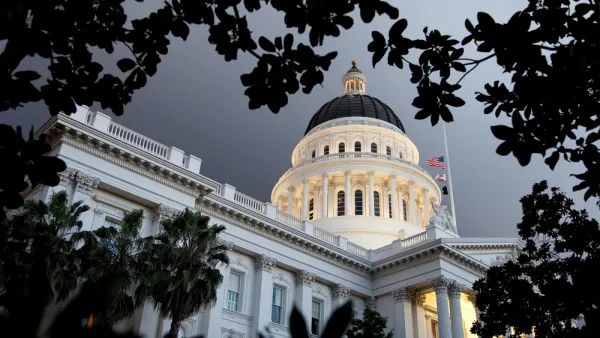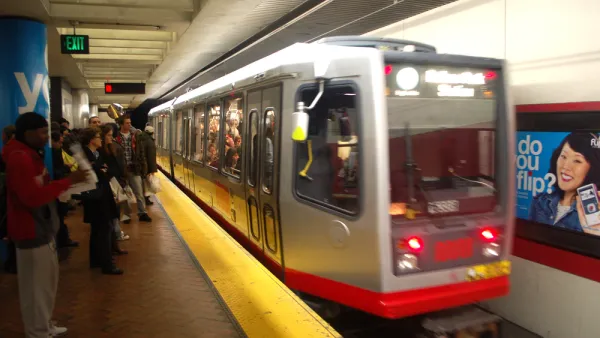Driving accounts for 62 percent of all trips in San Francisco - the same level as when the city's pioneering transit-first policy was adopted 40 years ago. Aaron Bialick looks at the reasons why the policy has led to "scant visible progress."
"When the San Francisco Board of Supervisors adopted a transit-first policy on March 19, 1973 — 40 years ago this week — a return to the early 1900s streetscape may not have been what they had in mind, but the city’s intent to undo decades of urban planning and governance geared towards promoting driving at the expense of public transit was clear," notes Bialick. "A key provision of the policy reads, 'Decisions regarding the use of limited public street and sidewalk space shall encourage the use of public rights of way by pedestrians, bicyclists, and public transit, and shall strive to reduce traffic and improve public health and safety.' (The policy was amended to include pedestrians and bicyclists in 1999.)"
"Yet today, the vast majority of San Francisco’s street space remains devoted to moving and storing private automobiles, making the public right-of-way hostile to walking and bicycling," he adds. "Muni remains underfunded, with vehicle breakdowns and delays caused by car traffic a daily part of riding transit."
While the SFMTA, elected officials, and city residents are all blamed for the lack of progress, some like Supervisor Scott Wiener are working to put muscle behind a policy that many feel was ahead of its time.
"If San Francisco were to be graded on its implementation of transit-first, 'I would give us a C+,' said Wiener. 'In a lot of areas, the MTA is moving in the right direction, but it needs to move faster and more aggressively.'"
FULL STORY: At 40 Years, San Francisco’s Transit-First Policy Still Struggles for Traction

Analysis: Cybertruck Fatality Rate Far Exceeds That of Ford Pinto
The Tesla Cybertruck was recalled seven times last year.

National Parks Layoffs Will Cause Communities to Lose Billions
Thousands of essential park workers were laid off this week, just before the busy spring break season.

Retro-silient?: America’s First “Eco-burb,” The Woodlands Turns 50
A master-planned community north of Houston offers lessons on green infrastructure and resilient design, but falls short of its founder’s lofty affordability and walkability goals.

Test News Post 1
This is a summary

Analysis: Cybertruck Fatality Rate Far Exceeds That of Ford Pinto
The Tesla Cybertruck was recalled seven times last year.

Test News Headline 46
Test for the image on the front page.
Urban Design for Planners 1: Software Tools
This six-course series explores essential urban design concepts using open source software and equips planners with the tools they need to participate fully in the urban design process.
Planning for Universal Design
Learn the tools for implementing Universal Design in planning regulations.
EMC Planning Group, Inc.
Planetizen
Planetizen
Mpact (formerly Rail~Volution)
Great Falls Development Authority, Inc.
HUDs Office of Policy Development and Research
NYU Wagner Graduate School of Public Service




























